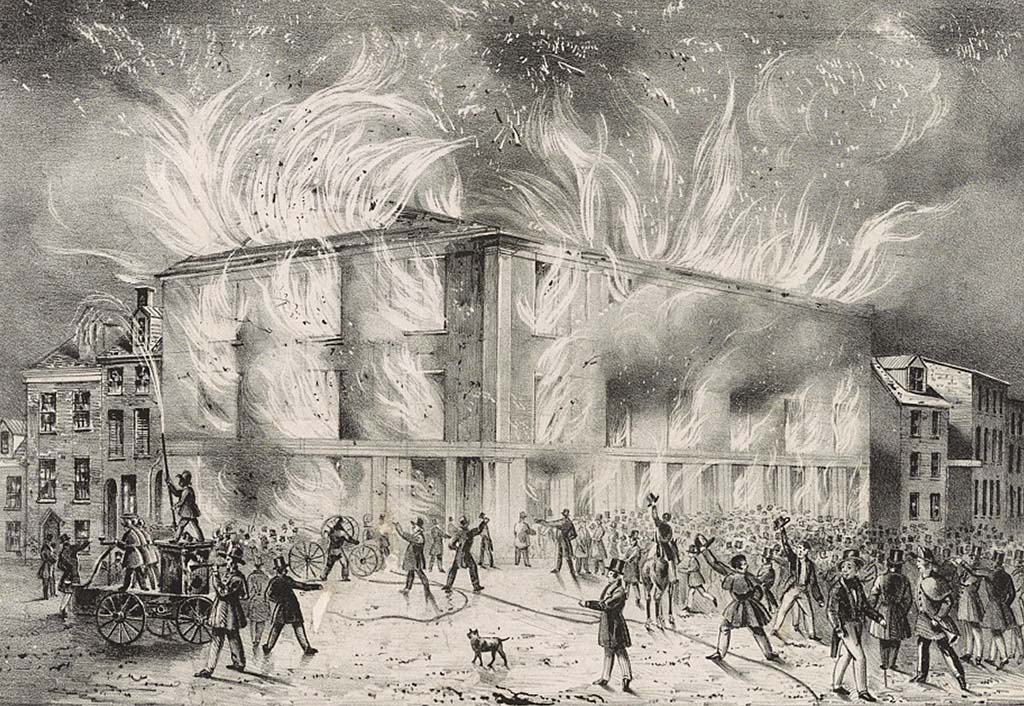The 1830s saw an unprecedented wave of mob violence in the Northern states. The Pennsylvania Hall fire is one such case of violence spurred by racial/gender tensions. The hall had several rooms and a large auditorium that seated three hundred people. A Board of Managers who “took pains to make it clear that the hall was not exclusively for the use of abolitionists” managed the hall. This was possible since the hall had several rooms and was two stories high. A series of meetings took place in the hall; some dealt with the women’s suffrage movement, others concerned the abolitionist movement. The presence of women speaking at the podium and whites and African Americans advocating for the abolition of slavery as well as women’s suffrage was more than the enemies of equality and freedom could bear. On the night of May 17, 1838, a mob congregated outside the hall. A messenger was sent to ask for police protection; but no help was sent, and the hall was set ablaze. In one of those ironies that point to the senselessness of mob violence, the Public Ledger of May 18, 1838 notes that “By [a] law passed by late legislature, it [was] provided that the injury done to any property from the violence of mobs, [was] to be compensated for out of the public funds of the district; so that this act [was] in effect destroying our own property.” The Public Ledger of May 21, 1838 stated that the Pennsylvania Hall fire stood as a case of the contrast between the rule of the mob and the rule of the law. The destruction of the hall exemplified an attempt of the mob to silence the voices of freedom and equality.
Pennsylvania Hall Fire (1838)

Do you find this information helpful? A small donation would help us keep this available to all. Forego a bottle of soda and donate its cost to us for the information you just learned, and feel good about helping to make it available to everyone.
BlackPast.org is a 501(c)(3) non-profit and our EIN is 26-1625373. Your donation is fully tax-deductible.
Cite this entry in APA format:
Source of the author's information:
S. Webb, History of Pennsylvania Hall Which Was Destroyed by a Mob, on the 17th of May 1838 (Philadelphia: Merrihew and Gunn, Printers, 1838); Ira V. Brown, “Racism and Sexism: The Case of Pennsylvania Hall,” Phylon, 37:2 (2nd Qtr., 1976), pp. 126-136. Public Ledger, May 18, 1838; James Brewer Steward, “Modernizing “Difference”: The Political Meanings of Color in the Free States,"1776-1840,” Journal of the Early Republic, 19:4 (Winter, 1999), 691-712.
